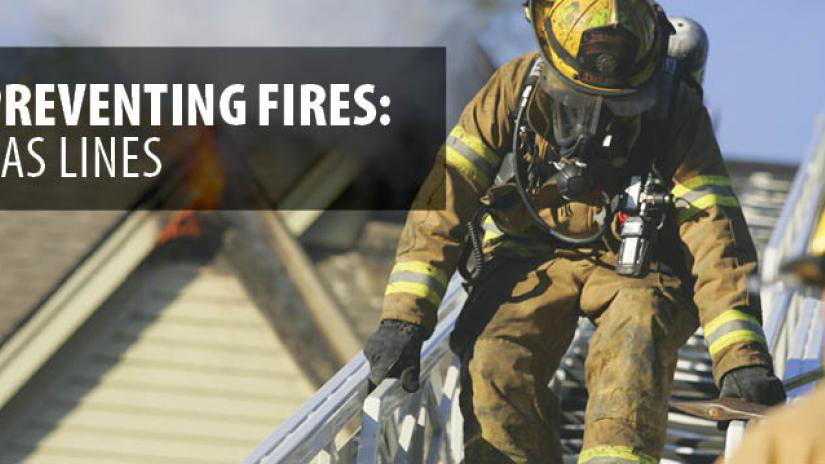
Gas lines pose significant fire risks if not properly maintained. Rainbow Restoration highlights key steps to safeguard your home.
|
Are dangerous gases seeping into your home or business and putting you and your family in harm’s way due to a higher risk of gas explosion and household fires? If proper safety steps are not taken to protect against gas leaks, they can lead to a dangerous situation.
Gas Line Fires
Gas explosions in the U.S. kill approximately 65 people annually, with pipes creating a variety of problems. Old or new, your gas lines may require a bit of attention to ensure fire prevention. If your home has…
- Rigid Piping
According to the National Fire Protection Association (NFPA), joints and fittings comprised of threaded, black iron pipe are a common source of gas leaks, fires, and explosions. Improper installation may result in leaks when pipes are not tightened sufficiently, cross-threaded, or are connected with excess/insufficient joint compound. This style of gas line may also frequently leak when constructed with multiple joints (joints are a common location of problems). They may also deteriorate over time and after exposure to lightning, and be compromised in the event of earthquakes, natural disasters, and other physical damage.
- CSST (Corrugated Stainless Steel Gas Tubing)
Unlike rigid pipe, the flexibility of CSST pipe requires fewer connections than rigid lines, allowing them to withstand cracking better than black iron piping. Unfortunately these newer lines, installed throughout the U.S. since 1989, have recently been identified as vulnerable to both direct and indirect lighting strikes, which can cause CSST piping to break. Fortunately, risk can be mitigated with:
- A correctly anchored grounding bar/post near the gas panel and a grounding line from the black pipe inside the home to this post. (NOTE: If piping from the exterior meter is CSST this is not possible. Additionally, this is not safe if your gas meter is owned by the utility company - the meter will ground strikes and be destroyed.)
- Several CSST manufacturers and the National Electric Code, section 250.104b, also recommend bonding all piping and metal air ducts (as well as metallic chimney liners, metallic appliance vents, metallic ducting and piping, electrical cables, and structural steel) within the premises to the electrical service grounding to provide additional safety.
Ensure Gas Fire Prevention
Proper gas line installation is best left to professionals. If your home utilizes appliances that run on gas, have your home professionally inspected for safety to prevent your home from becoming a fire prevention statistic. For those adding, updating, or repairing gas lines in the home, opt for licensed and insured professionals to ensure the utmost safety and quality of work.
Has your home fallen victim to a gas fire? The caring professionals at Rainbow Restoration® have the fire restoration skills it takes to quickly and safely help you put the pieces back together again. Contact us today.
For Further Reading:
Common Household Fire Starters Identified
The Hidden Health Hazards of Smoke and Soot
What You Need to Know about Grease Fires
